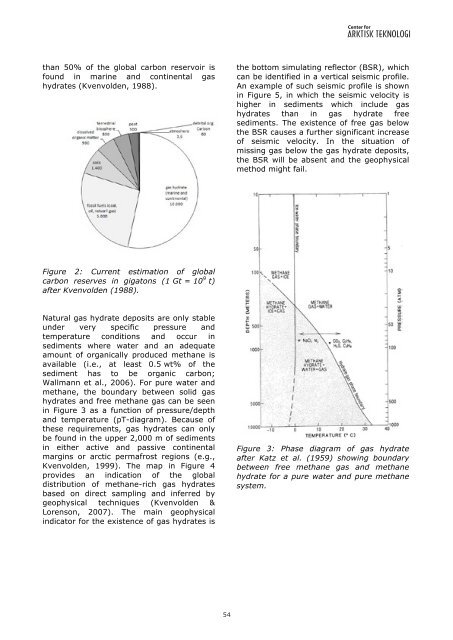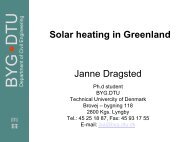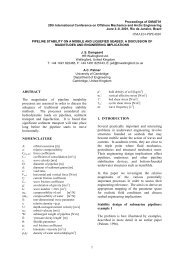Energiforsyning i Arktis – hvilken vej vælger Grønland? - Artek ...
Energiforsyning i Arktis – hvilken vej vælger Grønland? - Artek ...
Energiforsyning i Arktis – hvilken vej vælger Grønland? - Artek ...
Create successful ePaper yourself
Turn your PDF publications into a flip-book with our unique Google optimized e-Paper software.
than 50% of the global carbon reservoir is<br />
found in marine and continental gas<br />
hydrates (Kvenvolden, 1988).<br />
Figure 2: Current estimation of global<br />
carbon reserves in gigatons (1 Gt = 10 9 t)<br />
after Kvenvolden (1988).<br />
Natural gas hydrate deposits are only stable<br />
under very specific pressure and<br />
temperature conditions and occur in<br />
sediments where water and an adequate<br />
amount of organically produced methane is<br />
available (i.e., at least 0.5 wt% of the<br />
sediment has to be organic carbon;<br />
Wallmann et al., 2006). For pure water and<br />
methane, the boundary between solid gas<br />
hydrates and free methane gas can be seen<br />
in Figure 3 as a function of pressure/depth<br />
and temperature (pT-diagram). Because of<br />
these requirements, gas hydrates can only<br />
be found in the upper 2,000 m of sediments<br />
in either active and passive continental<br />
margins or arctic permafrost regions (e.g.,<br />
Kvenvolden, 1999). The map in Figure 4<br />
provides an indication of the global<br />
distribution of methane-rich gas hydrates<br />
based on direct sampling and inferred by<br />
geophysical techniques (Kvenvolden &<br />
Lorenson, 2007). The main geophysical<br />
indicator for the existence of gas hydrates is<br />
54<br />
the bottom simulating reflector (BSR), which<br />
can be identified in a vertical seismic profile.<br />
An example of such seismic profile is shown<br />
in Figure 5, in which the seismic velocity is<br />
higher in sediments which include gas<br />
hydrates than in gas hydrate free<br />
sediments. The existence of free gas below<br />
the BSR causes a further significant increase<br />
of seismic velocity. In the situation of<br />
missing gas below the gas hydrate deposits,<br />
the BSR will be absent and the geophysical<br />
method might fail.<br />
Figure 3: Phase diagram of gas hydrate<br />
after Katz et al. (1959) showing boundary<br />
between free methane gas and methane<br />
hydrate for a pure water and pure methane<br />
system.





